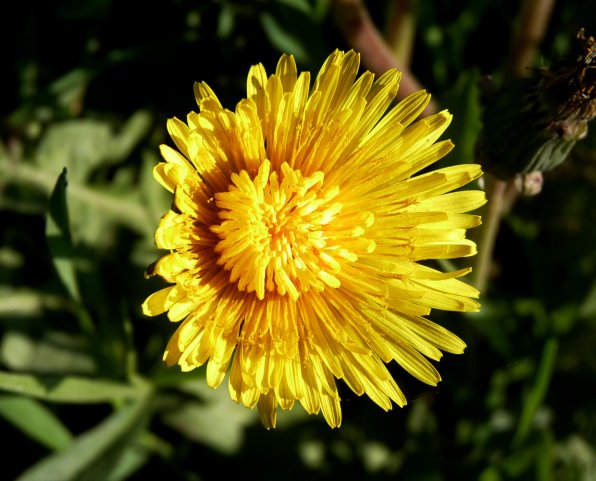Hungry? How about heading into the backyard to gather a spring salad?
A few years ago, I was introduced to the delicious world of backyard foraging at an herbal conference put on by the Northeast Organic Farming Association, and I haven't looked at my garden “weeds” the same way since. We munched on salads of wild greens and flowers, made wild greens pesto and hunted together for edible wild foods, many of which I found growing right under my nose here at home.
It's important to remember that not all wild plants are edible – in fact, some will make you quite sick. The best advice I learned at that conference was to “know one plant and know it well” before moving on to another. I'm no expert, so I still stick to a few that I know well. To begin, I looked them up in a good reference book. Learning with an experienced herbalist is the best way to gain confidence in foraging, but you can start now with a few common plants that are likely to be growing in your backyard.
Prior to World War II, lawns were perse carpets of green made up of dozens of different grasses and plants. After the war, with the introduction of herbicides and the resulting marketing campaigns, we came to love the iconic, no-weed carpet of a lawn. If you've resisted herbicide marketing and opted for a chemical-free, healthy and perse lawn, you're probably also growing wild edibles. Step outside and have a look.
Violets
The violet family includes more than 600 species, most of which have edible leaves and flowers. The common blue violet (Viola sorori), is a perennial, native to eastern North America. It grows enthusiastically in many a garden – so enthusiastically that it establishes itself in lawns quite easily, too. With its deep green, heart-shaped leaves and sweet-smelling purplish flowers, it has long symbolized everlasting love and, since the days of Hippocrates, has been used as medicine. During the middle ages, the sight of the first violet of spring was celebrated with joyful dancing. Depending on your perspective, it's a beautiful garden plant, dinner, medicine or a weed. In my case, it's all four.
Violet leaves are rich in vitamin C and are known as a powerful blood purifier. They have been used to treat asthma, sore throats, bronchitis, headaches – the list is very long. Both the leaf and flower are antiseptic, antifungal and anti-inflammatory. Some say that everything you need to heal common ailments is probably within a few hundred yards of home; violets might be a good place to start.
Mildly sweet, somewhat chewy and are a little nutty and spicy in flavor, violet leaves are an interesting addition to a mixed green salad. For an easy and unusual pesto, try substituting them for basil in your favorite recipe.
Dandelion
Dandelions (Taraxacum officinale) get their name from the middle Latin name “dent leo,” meaning “tooth of the lion.” For the best flavor, cut your dandelion greens before the plant flowers. If you wait until after flowering, you can parboil the greens to reduce their bitterness.
Dandelion leaves support liver function and help to remove toxins from the body. They are also a strong diuretic, as described by their French name, “pissenlit,” which means “wet the bed.” They are good for digestion, lower serum cholesterol, prevent/lower high blood pressure and fight common viruses. Just one cup of dandelion greens provides a day's requirement for vitamin A and about a third of a day's requirement for vitamin C.
In the kitchen, dandelions have lots of uses. The greens are delicious raw or sauteed with garlic in olive oil. Dandelion blooms are edible, too, but best picked just before the flower opens. They have a sweet, honey-like flavor. (Collect enough of them and you'll be on your way to dandelion wine.)
Balance the bitterness of dandelion greens with the sweetness of milder greens like violets for a delicious spring salad. Top it with violet and dandelion blooms and a simple dressing.
All that, free for the taking in your own backyard.
Honey Mustard Dressing
Try topping your salad of wild greens and flowers with this simple, quick dressing.
¼ teaspoon dry mustard
¼ teaspoon salt
a few grinds of fresh, black pepper
1 tablespoon honey
2 tablespoons apple cider vinegar
½ cup olive oil
Mix all ingredients together in a small mason jar. Shake well and serve.
Eleanor Baron lives, gardens, cooks and writes in Concord, and stalks area farmers markets for fresh, in-season produce. Visit her blog at nourishingwords.net for more ideas and inspiration on incorporating healthy habits into your life. To learn more about wild edibles, check out the upcoming Spring Herb and Garden Day, coming up on June 2 at the McLane Audubon Center in Concord. More info at nofanh.org/herbday.






















